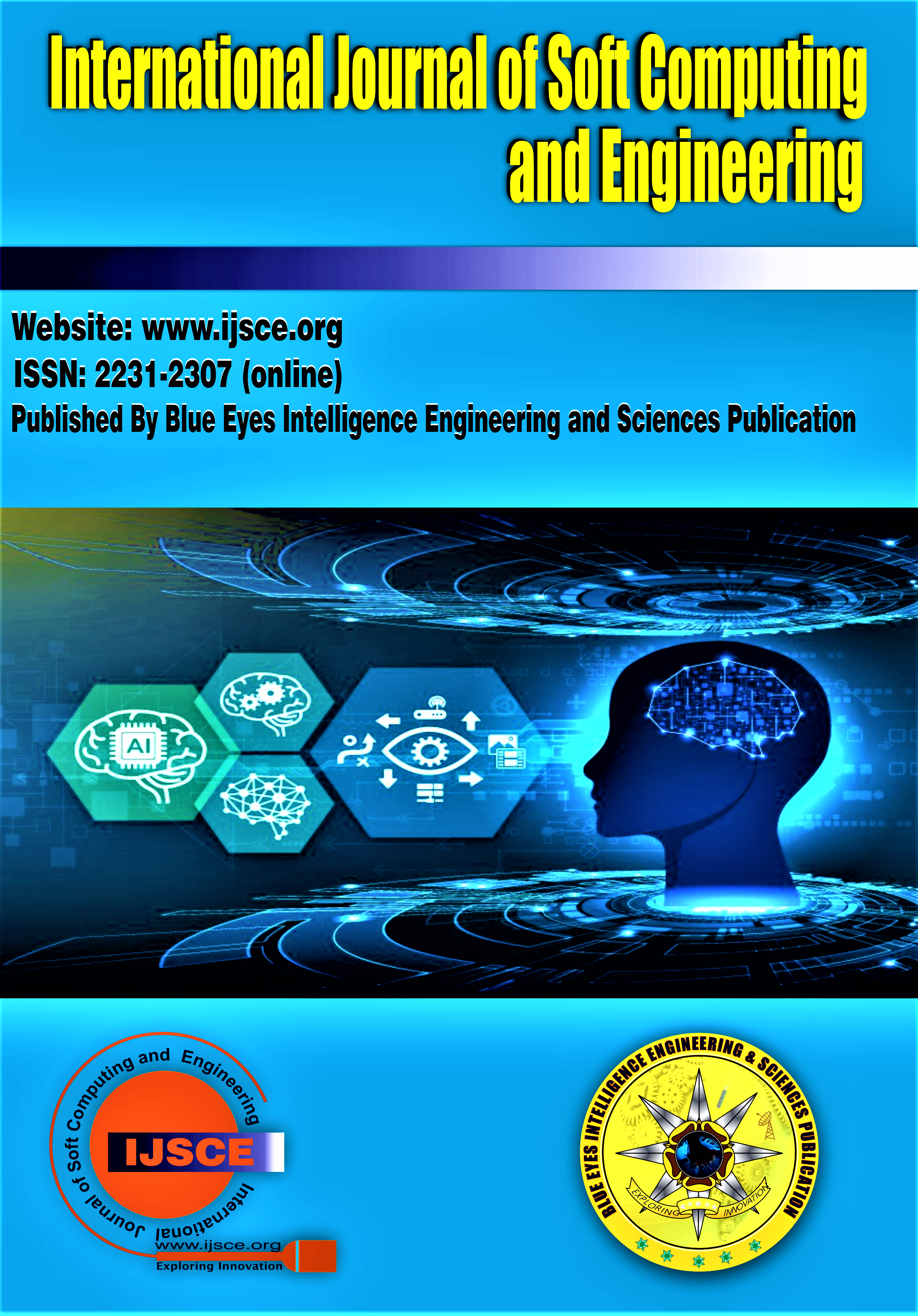Promoting Project Outcomes: A Development Approach to Generative AI and LLM-Based Software Applications’ Deployment
Main Article Content
Abstract
In the dynamic realm of artificial intelligence, the emergence of Generative Artificial Intelligence (GAI) has marked a revolutionary stride, particularly in the context of project execution models. This paper delves deep into the sophisticated architectures of GAI, mainly focusing on Large Language Models (LLMs) such as GPT-3 and BERT and their practical applications across varied scenarios. The intricacies of deploying these models have been effectively unraveled to ensure resonating with the specific demands of distinct cases, falling within departmental integration, medical diagnostics, or tailored training modules. Central to the proposed exposition is the innovative "Forward and Back Systematic Approach" designed for executing GAI projects. This approach is meticulously structured to enhance efficiency and ensure a harmonious alignment with the nuanced requirements of diverse applications. We dissect some strategies, including leveraging Private Generalized LLM APIs, in-context learning (ICL), and fine-tuning methodologies, to empower these models to adapt and excel. Furthermore, the proposed platform underscores the pivotal role of evaluation criteria in refining GAI project outcomes, ensuring each model's prowess. It is not strictly theoretical but yields tangible benefits in real-world applications. Under the aegis of this comprehensive exploration, the result of the study would serve as a beacon for enthusiasts and professionals navigating the GAI landscape by offering insights into optimizing robust models for specific and case-driven utilities. Standing on the brink of a modern era in AI, this paper contributes a substantial framework and critical analysis, steering the course for future innovations and applications of GAI.
Downloads
Article Details
Section

This work is licensed under a Creative Commons Attribution-NonCommercial-NoDerivatives 4.0 International License.
How to Cite
References
Ng, A. and Jordan, M. (2001).On discriminative vs. generative classifiers: A comparison of logistic regression and naive Bayes.In Advances in Neural Information Processing Systems, volume 14, pages 841––848.
Hu, L. (2023). Generative AI and Future. Retrieved on January 23 from https://pub.towardsai.net/generative-ai-and-future-c3b1695876f2.
Jovanović, M. (2023). Generative Artificial Intelligence: Trends and Prospects. https://www.computer.org/csdl/magazine/co/2022/10/09903869/1H0G6xvtREk.0.1109/MC.2022.3192720.
Abukmeil, M., Ferrari, S., Genovese, A., Piuri, V., & Scotti, F. (2021). A survey of unsupervised generativemodels for exploratory data analysis and representation learning. Acm computing surveys (csur), 54(5), https://doi.org/10.1145/3450963
Gui, J., Sun, Z., Wen, Y., Tao, D., & Ye, J. (2021). A review on generative adversarial networks: Algorithms, theory, and applications. IEEE Transactions on Knowledge and Data Engineering. doi: 10.1109/TKDE.2021.3130191. https://doi.org/10.1109/TKDE.2021.3130191
Brown, T., Mann, B., Ryder, N., Subbiah, M., Kaplan, J. D., Dhariwal, P., et al. (2020). Language models are few-shot learners. Advances in Neural Information Processing Systems, 33: 1877-1901.
Aydın, Ö., & Karaarslan, E. (2023). Is ChatGPT leading generative AI? What is beyond expectations? Academic Platform Journal of Engineering and Smart Systems. https://doi.org/10.2139/ssrn.4341500
Pavlik, J. V. (2023). Collaborating With ChatGPT: Considering the Implications of Generative Artificial Intelligence for Journalism and Media Education. Journalism & Mass Communication Educator, 0(0). https://doi.org/10.1177/10776958221149577
Kulkarni, A., Shivananda, A., Kulkarni, A., & Gudivada, D. (2023). Applied Generative AI for Beginners: Practical Knowledge on Diffusion Models, ChatGPT, and Other LLMs. https://doi.org/10.1007/978-1-4842-9994-4
Spitale, G., Biller-Andorno, N., and Germani, F. (2023).AI model GPT-3 (dis) informs us better than humans.arXiv:2301.11924. https://doi.org/10.1126/sciadv.adh1850
Ji, Z., Lee, N., Frieske, R., Yu, T., Su, D., Xu, Y., Ishii, E., Bang, Y. J., Madotto, A., and Fung, P. (2023).Survey of hallucination in natural language generation.ACM Computing Surveys, 55(12):1–38. https://doi.org/10.1145/3571730
B. A. y Arcas, (2022). “Do large language models understand us?” Daedalus, vol. 151, no. 2, pp. 183–197. https://doi.org/10.1162/daed_a_01909
Zellers, R., Holtzman, A., Peters, M. E., Mottaghi, R., Choi, Y., Kuehlkamp, A., ... & Farhadi, A. (2023). A Survey for In-context Learning. ar5iv. Retrieved from https://ar5iv.labs.arxiv.org/html/2301.00234
Bai, Y., Jones, A., Ndousse, K., Askell, A., Chen, A., DasSarma, N., Drain, D., Fort, S., Ganguli, D., Henighan, T., Joseph, N., Kadavath, S., Kernion, J., Conerly, T., El Showk, S., Elhage, N., Hatfield-Dodds, Z., Hernandez, D., Hume, T., Johnston, S., Kravec, S., Lovitt, L., Nanda, N., Olsson, C., Amodei, D., Brown, T. B., Clark, J., McCandlish, S., Olah, C., Mann, B., Kaplan, J. (2022). Training a helpful and harmless assistant with reinforcement learning from human feedback. CoRR, abs/2204.05862.
Chung, H. W., Hou, L., Longpre, S., Zoph, B., Tay, Y., Fedus, W., Li, E., Wang, X., Dehghani, M., Brahma, S., Webson, A., Gu, S. S., Dai, Z., Suzgun, M., Chen, X., Chowdhery, A., Narang, S., Mishra, G., Yu, A., Zhao, V. Y., Huang, Y., Dai, A. M., Yu, H., Petrov, S., Chi, E. H., Dean, J., Devlin, J., Roberts, A., Zhou, D., Le, Q. V., & Wei, J. (2022). Scaling instruction-finetuned language models. CoRR, abs/2210.11416.
Guo, Z., Jin, R., Liu, C., Huang, Y., Shi, D., Supryadi, Linhao, Y., Liu, Y., Li, J., Xiong, B., & Xiong, D. (2023). Evaluating Large Language Models: A Comprehensive Survey. arXiv. https://arxiv.org/abs/2310.19736
Pichai, S. (2023).An important next step on our AIjourney.Accessed on 03/16/23.
Mehdi, Y. (2023). Reinventing search with a new AI-powered Microsoft Bing and Edge, your copilot for the web. Official Microsoft Blog, 7.
Blodgett, S. L., Barocas, S., Daum’e, H., and Wallach, H. M. (2020).Language (technology) is power: A critical survey of “bias” in nlp.In Annual Meeting of the Association for Computational Linguistics. https://doi.org/10.18653/v1/2020.acl-main.485
Jones, E. and Steinhardt, J. (2022).Capturing failures of large language models via human cognitive biases.In Oh, A. H., Agarwal, A., Belgrave, D., and Cho, K., editors, Advances in Neural Information Processing Systems.
Adik, K. (2023, July 13). Generative AI Project Life Cycle. Medium. https://medium.com/@kanikaadik07/generative-ai-project-life-cycle-55ce9092e24a
Alenezi, M., & Almuairfi, S. (2019). Security Risks in the Software Development Lifecycle. In International Journal of Recent Technology and Engineering (IJRTE) (Vol. 8, Issue 3, pp. 7048–7055). https://doi.org/10.35940/ijrte.c5374.098319





